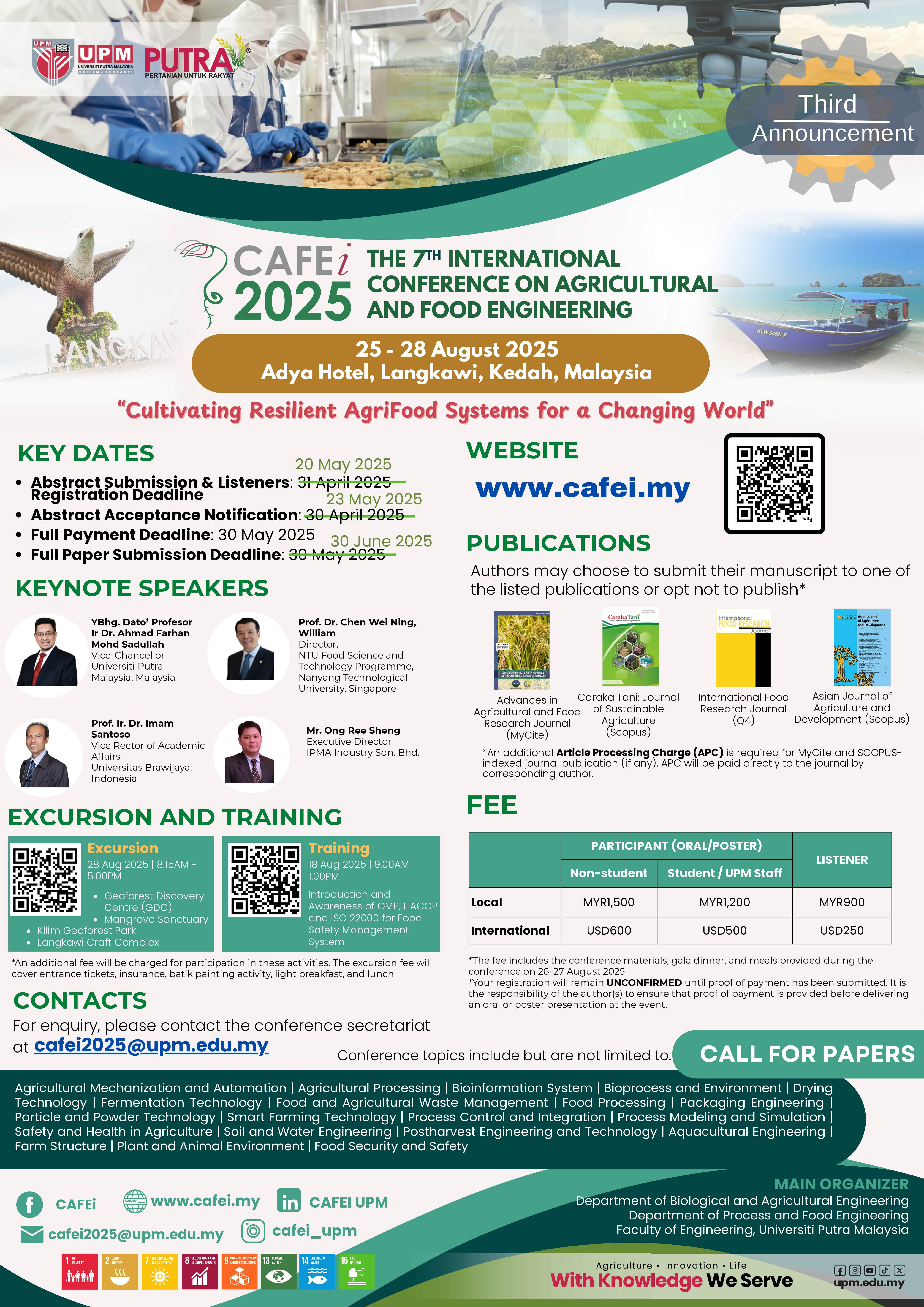Development of Decision Support System (DSS) for Greenhouse Ventilation and Cooling Control
DOI:
https://doi.org/10.36877/aafrj.a0000369Abstract
The confined heat created by the sunlight and ambient temperature is one of the obstacles to greenhouses in the tropics. A conservatory in tropical regions thus requires a proper ventilation and cooling system to provide an ideal greenhouse temperature to support crop production. The main objective of this study is to develop a Decision Support System (DSS) for optimum greenhouse ventilation and cooling control. An equation model to predict the temperature inside was developed by considering heat generation and heat loss inside the greenhouse. The accuracy of the equation model was validated with secondary data from the on-field greenhouse by statistical evaluation metrics. The statistical evaluation proved that the equation model is good with 2.11°C of Root Mean Square Error (RMSE), 6.22% of Percent BIAS (PBIAS) and 0.94 of Nash-Sutcliffe efficiency (NSE) value. A DSS using Microsoft Excel with Visual Basic for Applications (VBA) is developed based on the equation model to provide the ventilation and cooling system information. Input required for the DSS is a climatic condition, dimension and covering greenhouse material. The output of the DSS is the temperature inside the greenhouse, natural ventilation design, forced ventilation, active cooling system design using an evaporative pad and fan, and fogging system. The DSS can be used as an approach for ventilation and cooling design recommendation for the optimum temperature inside the greenhouse.
Downloads
Published
How to Cite
Issue
Section
License
Copyright (c) 2023 Diyana Jamaludin, Aini Amini Mohd Shukri, M Saufi M Kassim, Muhammad Hazwan Hamzah

This work is licensed under a Creative Commons Attribution-NonCommercial 4.0 International License.
Author(s) shall retain the copyright of their work and grant the Journal/Publisher right for the first publication with the work simultaneously licensed under:
Creative Commons Attribution-NonCommercial 4.0 International (CC BY-NC 4.0). This license allows for the copying, distribution and transmission of the work, provided the correct attribution of the original creator is stated. Adaptation and remixing are also permitted.

This broad license intends to facilitate free access to, as well as the unrestricted reuse of, original works of all types for non-commercial purposes.
The author(s) permits HH Publisher to publish this article that has not been submitted elsewhere.

.png)

.jpg)



